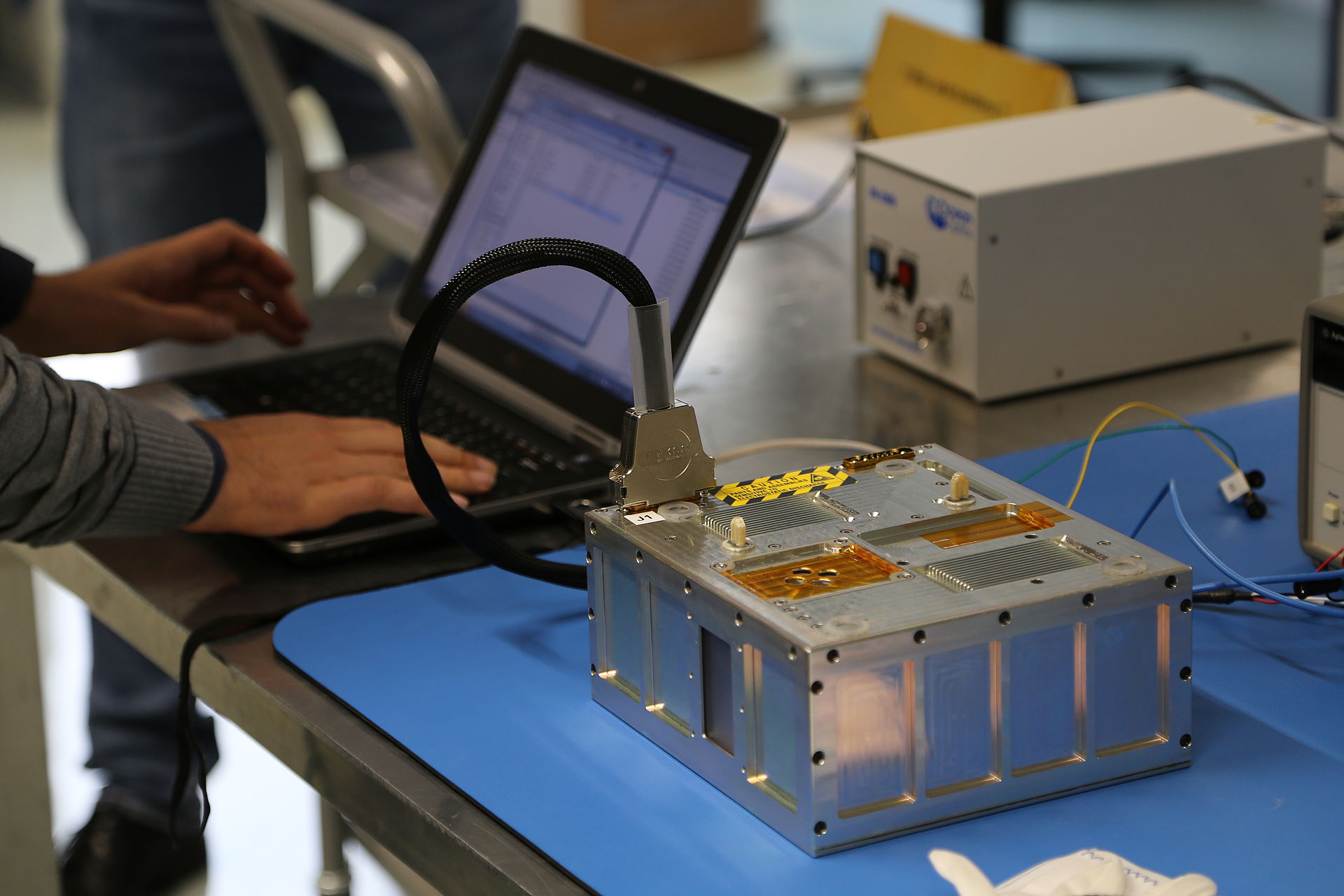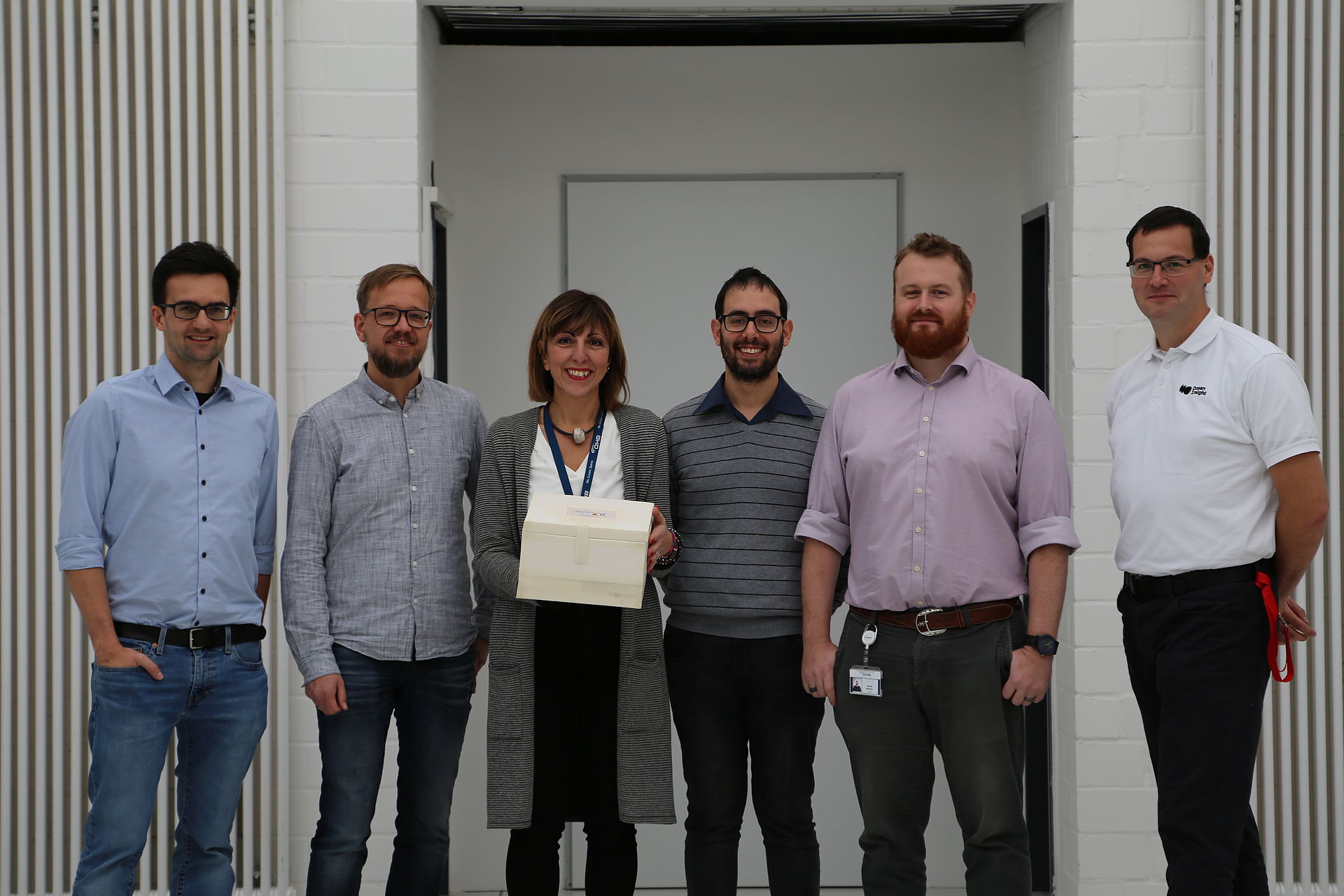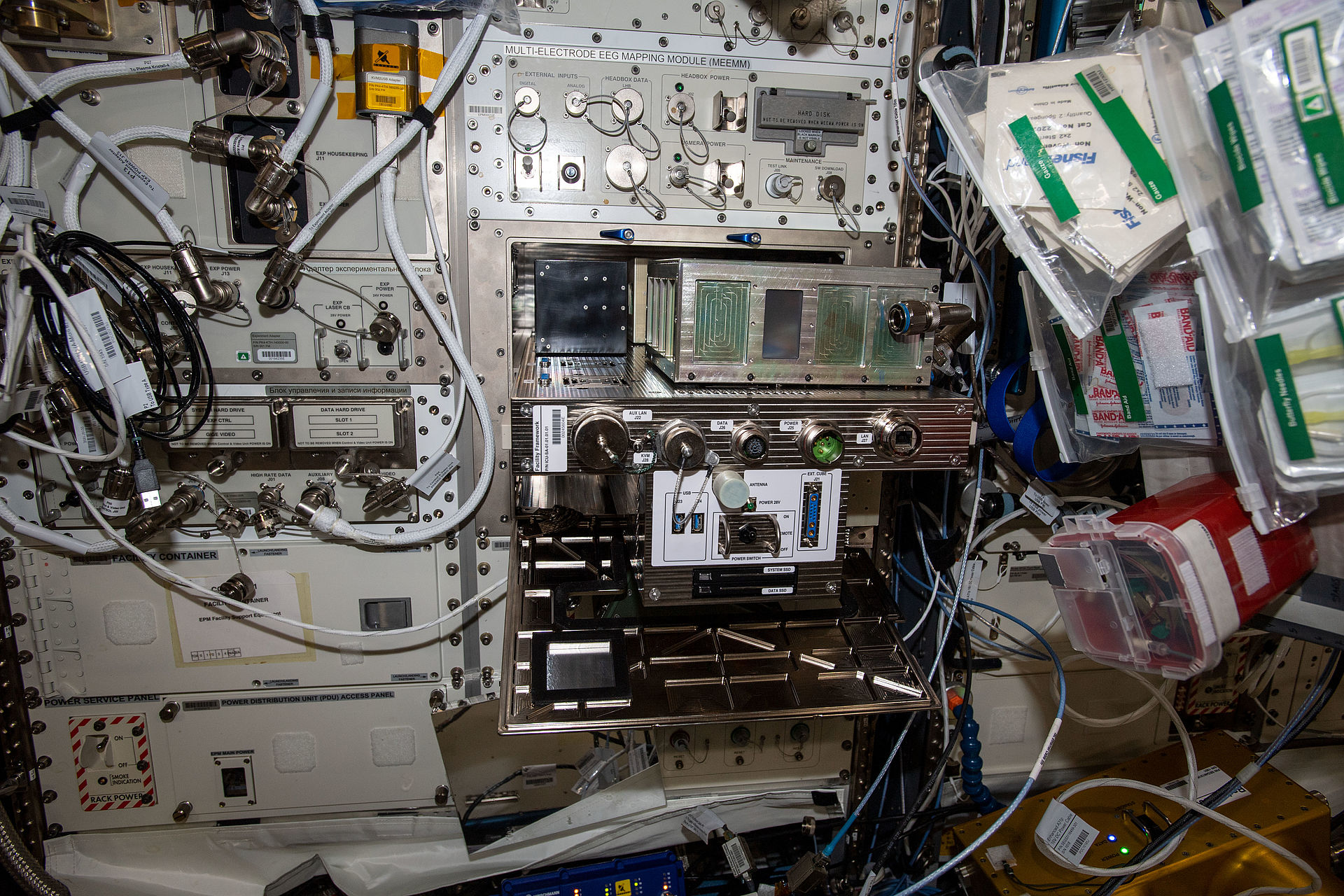
Bremen, November 28, 2019. Following 132 days in space and a journey across several continents, SPECTRODemo, a payload developed on behalf of the European Space Agency ESA by OHB System AG, a subsidiary of OHB SE, in cooperation with US company Ocean Insight, has now returned to OHB in Bremen. SPECTRODemo is a technology demonstrator, designed for in-flight testing of key functions of a UV/VIS spectrometer and an optical fiber switch, which serves as a precursor of the instrument that will be installed on the future Exobiology Facility developed by the ESA. On the Exobiology Facility, which will be exposed to the space environment, the spectrometer will be used to analyze biological and non-biological samples, monitoring changes in the absorption spectra of samples over time and revealing the chemical consequences of exposure to solar radiation. The data collected by the SPECTRODemo technology demonstrator is expected to supply information on the deployability and reliability of UV/VIS spectroscopy in-situ, i.e. in the analysis of data sets in space.
The SPECTRODemo technology demonstrator has been developed to increase the maturity of the complete optical chain (spectrometer and fiber switch).The payload was launched on April 17, 2019 and operated continuously until August 9, 2019. The payload operated on board the ISS within the International Commercial Experiments Cubes Facility (size 2 x 2 units, where 1 unit = 10 x 10 x 10 cm), accommodated in the European Physiology Module in the Columbus laboratory.
The payload was powered up successfully at OHB’s Bremen site on November 13, 2019, after return from NASA Houston. Currently the data collected on board the ISS is under analysis, while the individual components are also being thoroughly examined. In particular, the spectrometer’s CCD performance is under close scrutiny and will be correlated with the received radiation dose, which was monitored in-situ with a radiation dosimeter kindly provided by Dr. Thomas Berger from the DLR Institute of Aerospace Medicine.
All the data from the demonstrator will be useful in the upcoming development of the Exobiology Facility flight model, especially with respect to operation, durability and reliability of the optical subsystems.
Exobiology: Tracing How Life Changes in Space
Exobiology deals with the question of life in space and investigates, among other things, the effects of space conditions on biological samples. Exposure platforms in Low Earth Orbit with the option of long-duration solar exposure are ideal for investigating the effects of cosmic and solar radiation on various biological and non-biological samples. To this end, scientists have so far used the ISS via the EXPOSE facility to expose samples to the space environment with subsequent analyses after return to Earth. Up to now it was not possible to monitor the samples in real-time; the effects of the exposure could not be evaluated until the experiments had come to an end.
In order to be able to monitor samples in-situ and near-real time, ESA is planning the development of a novel platform for exobiological research on the ISS. This Exobiology Facility, which can host up to seven different experiments at the same time, will supply scientists with findings regarding the development of the solar system and the origins of life. The new research facility is scheduled to be installed on the Bartolomeo Platform, named after the younger brother of Christopher Columbus, which is due to dock on the ISS in 2020.
Exobiology Research Installation also Planned for Lunar Gateway
Alongside the ISS, a further platform for exobiological research will become available to the scientific community in the near future: the Lunar Gateway, humanity’s future outpost in orbit around the Moon. ESA initiated studies into possible payloads that could be sent in the early phases of this platform to understand the scientific opportunities and to be able to respond accordingly. In September 2019, OHB’s Human Spaceflight Department as subcontractor of Kayser Italia was awarded an ESA study on an astrobiology payload for the Gateway, building on the heritage of the ISS Exobiology Facility. The work packages given to OHB include responsibility for the optical in-situ monitoring instruments.
Fruitful Collaboration
The SPECTRODemo project is an example of the productive collaboration with an external partner and between the OHB sites in Bremen and Oberpfaffenhofen. The extensive experience of Ocean Insight in the development of spectrometers for use in space is combined with the expertise in complex optics based in Oberpfaffenhofen and the long-standing ISS payload experience at the Bremen site. The enthusiasm of Antonella Sgambati, Lead System Engineer of the SPECTRODemo project at OHB, is plain to see: “Work is work, but working with enthusiastic and competent people is pure joy.”
Contact for media representatives:
Marianne Radel
Head of Corporate Communications
Phone: +49 421 2020 9159
Email: marianne.radel@ohb.de
Contact for investors and analysts:
Marcel Dietz
Investor Relations
Phone: +49 421 2020 6426
Email: ir@ohb.de


